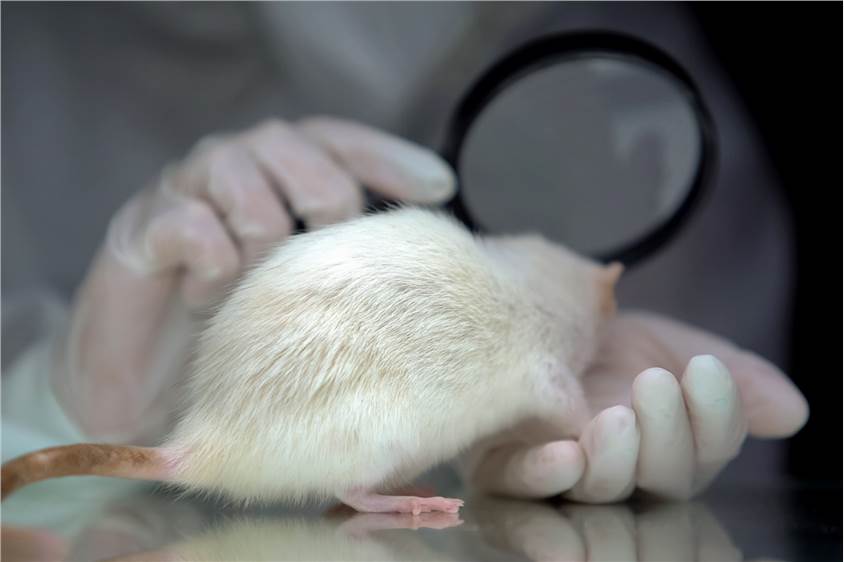Subchronic toxicity is defined as the health damage response induced by repeated daily exposure to a test substance during a portion of the animal's survival time.
Our company offers specialized subchronic toxicity testing services to help customers determine the toxic effects caused by repeated exposure to test samples over an extended period and to understand the toxic effects on target organs and possible accumulation effects.
Our services help customers explore the threshold dose or concentration of subchronic toxicity and the dose level at which no toxic effects are observed during subchronic testing, as well as find exposure doses and observables for chronic testing.
Test Range
Veterinary drugs, pesticides, chemicals, fungicides, organic toxicants, solid waste, domestic waste leachate, hazardous waste, sewage, sludge, water quality, surfactants, etc.

About Subchronic Toxicity Test Service
Test Method
Our company repeatedly administers test samples to experimental animals at different doses orally, percutaneously or via the respiratory tract. During this period, we observe the animals for signs of intoxication, weigh them regularly and calculate their food intake, and perform measurements of blood biochemical parameters, hematological parameters, and histopathological examination parameters.
- The transoral test was conducted for 90 days.
- The transdermal test is conducted for 30 days.
- Inhalation tests were conducted for 30 days or 90 days, 6 hours per day, and 5 days per week.
Subjects
When gavage poisoning is performed, we select a suitable solvent or carrier based on the characteristics of the sample and dissolve or suspend the subject in a suitable medium. The preferred solvent is usually water. Samples that are insoluble in water may use edible oil. Samples that are insoluble in water or oil may be prepared as a suspension using sodium carboxymethyl cellulose, starch, etc.
When performing percutaneous and respiratory inhalation routes of contamination, we contaminate in prodrug form or dissolve in a suitable medium.
Test Animals
For rodents, we prefer rats. White rabbits and guinea pigs are also preferred. For non-rodents, we prefer dogs, and the commonly used strain is the beagle dog.
Experimental animals should be selected from both sexes.

Route of Infection
- Transoral: The test sample can be mixed with feed or water, or gavage.
- Transdermal: The sample should be applied to the skin as thinly and evenly as possible.
- Inhalation: The test is carried out using a dynamic poisoning system.
Test Observations
- General clinical observations: Changes in skin, coat, eyes and mucous membranes, changes in the respiratory system, circulatory system, nervous system, limb movements and behavioral patterns.
- Food and food intake and water intake are recorded.
- Internal eye examinations using examining glasses.
- Hematologic examination: Hemoglobin concentration, red blood cell count, hematocrit, total white blood cell count and classification, platelet count, coagulation function (prothrombin time and activated fraction suspected activation time). Reticulocytes, bone marrow smear cytology should be added if there is an effect on the hematological system.
- Blood biochemistry: Alanine aminotransferase (ALT), aspartate transaminase (AST), alkaline phosphatase (ALP), blood urea nitrogen (BUN), creatinine (Cr), blood glucose (GLU), albumin (ALB), total protein (TP), total cholesterol (TCH), potassium, and sodium.
- Urinalysis: Appearance, specific gravity, acidity, urine protein, glucose and blood cells, etc.
- Pathological examination: Gross anatomical examination and histopathological examination.
- Other examinations: Additional sensitive tests such as immune response, neurological and neurobehavioral depending on the nature of the sample and toxic reaction.
Subchronic Toxicity Test Report
The final test report Our company provides includes the following.
- Test name, test start and end date, etc.
- Test summary.
- Specific information on the physical and chemical properties of the test samples, preparation methods, etc.
- Specific information on the experimental animals and laboratory animal facilities.
- Dose and group: The principle or basis for selecting the dose, the dose, and group, the way the animals are grouped, etc.
- Infection methods: the main instruments and equipment, the route of infection, the infection program, test period, observation indicators, etc.
- Test results: clinical manifestations of poisoning, body weight, food intake, changes in indicators, gross anatomical and histopathological changes, etc.
- Test conclusion: The conclusion of the toxic effects of the test samples and the toxic effects on target organs, as well as NOAEL and LOAEL.
If you are looking for the best solution in the field of toxicology research, please feel free to contact us.
Related Solutions
It should be noted that our service is only used for research, not for clinical use.


